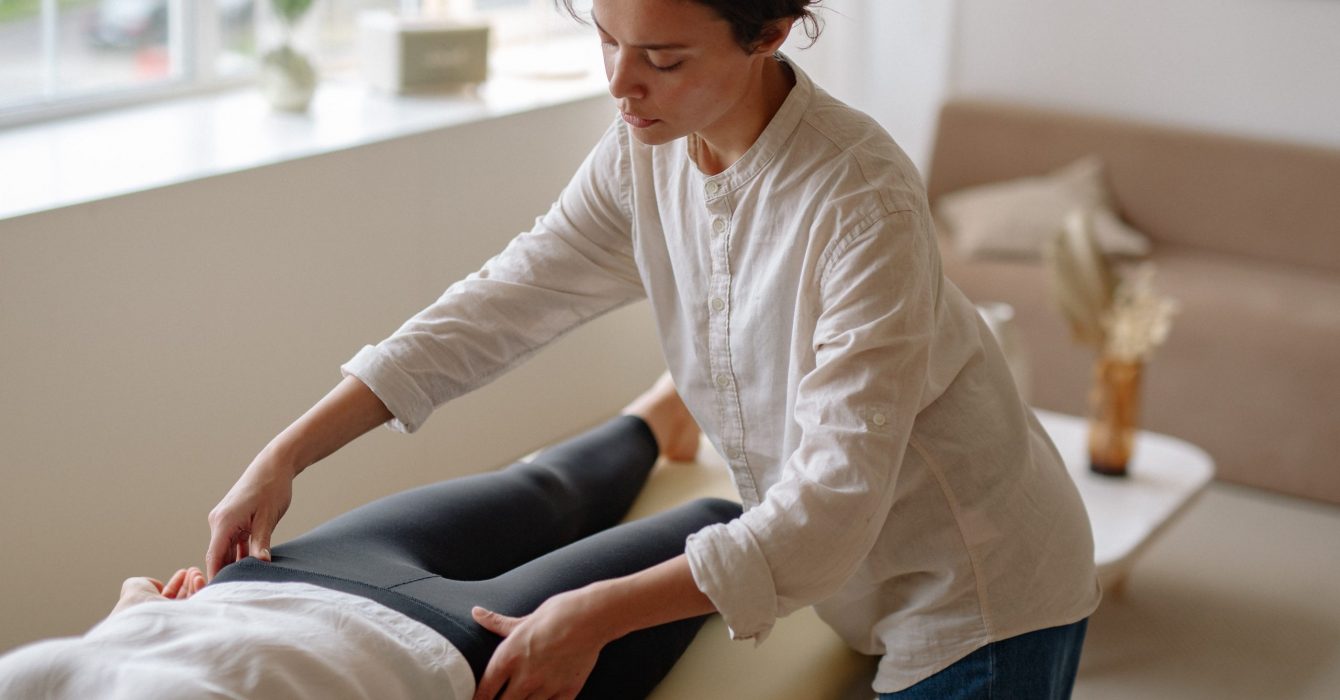We speak to a woman who says physiotherapy could be key to managing chronic pelvic pain in women.
The NHS spends around £326m a year on the management of chronic pelvic pain in women — 20% of referrals by gynaecologists are made specifically for this condition. It influences bowel, bladder and sexual function, affecting the quality of life of over a million women in the UK.
What causes pelvic pain in women?
Pelvic pain can be caused by a number of reasons, ranging from endometriosis, childbirth, prolapse and infection. Symptoms vary greatly and can range from stabbing or burning pain to cramping, dull aches, pain during urination and/or sex, constipation and incontinence. And while a diagnosis of ‘chronic pelvic pain’ can be useful, the journey to relieving the issue can be tricky to navigate, as the complex condition is still not well understood.
Whilst laparoscopies (investigative keyhole surgery through the stomach) may be the main way to investigate hidden causes, pelvic physiotherapists are increasingly being turned to by women keen to manage the effects of the condition.

What are the benefits of pelvic physiotherapy?
“Often women will have been misunderstood, under-treated and suffering from pelvic pain for a very long time,” explains physiotherapist Annabelle Fish. “My role, first and foremost, before any treatment, is to listen and to validate their experiences.”
During an initial consultation, Annabelle will discuss the patient’s goals and listen to their experiences, concerns and medical history before conducting a physical examination — which can, where necessary, include an internal vaginal examination.
“The main focus is for treatment to stay relaxed and not painful in any way,” she explains. This is because tension is frequently at the root of pain. “Often, there’ll be an initial trigger, such as recurring urinary tract infection or pregnancy,” Annabelle says. “If symptoms become chronic, the surrounding tissues will become amplified and tense, which is what starts to make every day activities painful — even sitting”.
In physiotherapy, ‘down-training’ the pelvic floor with an exercise programme, focusing on effective relaxation (and contraction) of the muscles is the main treatment to help reduce or eradicate symptoms. “We use techniques like pelvic stretches, breathing and massage to help patients,” Annabella explains. “The purpose of manually releasing (through massage) and strengthening the pelvic floor muscles is to reduce tissue inflammation and sensitivity, improve muscle range of movement, and induce relaxation, so that spasms or soreness become less severe and less frequent over time.”

How your mental health can impact pain
Studies have shown that 60.8% of people with chronic pain experience severe depression and anxiety disorders. “Pain can be influenced by many factors,” Annabelle says. “Getting to know my clients helps us both identify the individual triggers and stressors that can ramp up the sympathetic nervous system, which in turn amplifies pain.” Annabelle believes that alongside physical treatment, it’s vital to address lifestyle pressures that could be contributing to “pain pathways”.
While it’s important to follow your GP or consultant’s advice and attend all consultations and tests — be it for chronic pelvic pain or mental health support — Annabella believes pelvic physiotherapy could bring relief to thousands of women in the UK.













